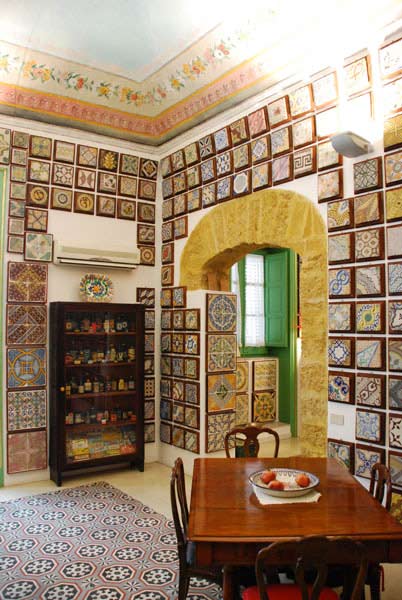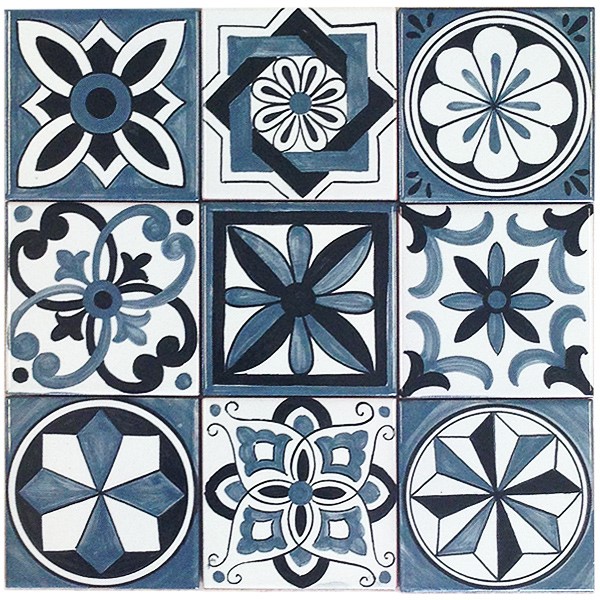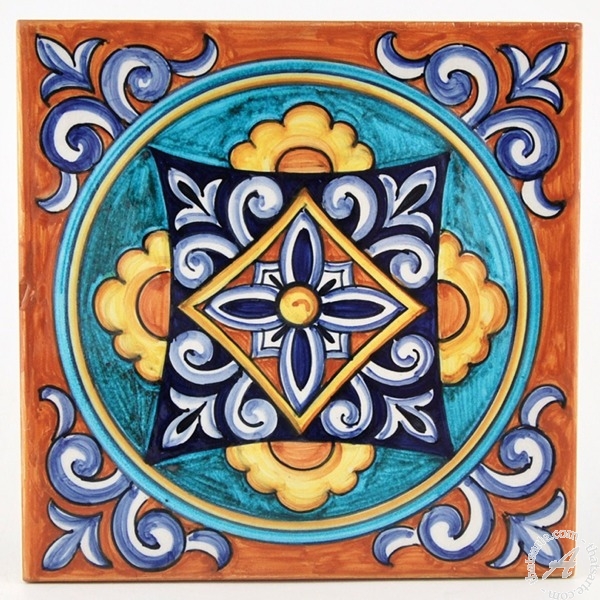New from Francesca Niccacci pottery studio: cool, contemporary design with a traditional twist.
hand painted tiles
Just added! Eugenio’s geometric tiles
I do hope we are not getting boring, despite our third post in a row about Italian tiles. The truth is that we never seem to get enough of them and the enthusiasm of our Customers about their unique interior design projects is so contagious!
So we have convinced Eugenio Ricciarelli, a dear friend and the very first pottery maker we added to our Italian pottery website, to paint for us a small collection of tiles, richly decorated, colorful and vibrant with energy.
We have imagined them on a tabletop, inlaid into wood or wrought iron, on the floor as an inlaid tile rug, on a backsplash mixed with solid tiles, as a wall panel over a bath tub … endless decorating solutions for one of most genuine products of Italian arts and crafts.
Italian tiles to love
Francesca Niccacci is an Italian ceramic painter from Deruta, winner of International prizes.
She is a great interpreter of historical and mythological scenes, featured in Museums and Churches around the world. Yet she loves the geometric designs that are so much “Deruta”. Francesca plays with them, taking them to a personal next step and applying them to wall plates and tiles.
We particularly like her tiles, so intricate and rich. She paints them in different designs and patterns, that are often a great inspiration for interior designers to create unique backsplashes or tiled surfaces.
Collecting Italian majolica floor tiles
 This story is about love and dedication, about beauty and craftsmanship, about history and heritage.
This story is about love and dedication, about beauty and craftsmanship, about history and heritage.
Pio Mellina is a man who turned his passion for antique Italian tiles into a dream and a few years ago the dream came true. He has created “Le Stanze al Genio”, a Museum in Palermo where visitors can explore his huge collection and marvel at the variety of designs, styles and colors. A display of Italic creative genius! Pio has been collecting antique Italian tiles since he was a child. Instead of joining his friend for a soccer match, he searched the little street markets in the old city. Tiles were cheap, as people did not know what to do with them. Sometimes they were just the waste of the renovation of old houses. Pio purchased them and stored them in his parent’s basement.
When the basement was packed with tiles and Pio could no longer locate what he was looking for, he started to organize them and to collect information as well. His studies changed his collecting habits: he learnt to appraise the tiles he found and purchased some very rare pieces. Pio’s wish to have a place of his own where the tiles could be displayed and appreciated by anyone grew over time, just like his collection. In 1998 he bought a flat in an ancient downtown building. He started the renovation with a twofold purpose: it had to be his home as well as the place where all his tiles could be beautifully displayed. In 2008 Pio Mellina’s house and museum was ready and opened to the public. Continue reading



